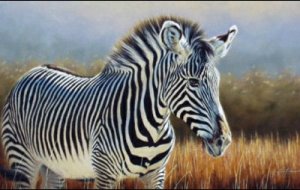 Outbreaks of deadly anthrax exacerbated by a searing drought that has hit east Africa has killed scores of rare Grevy's zebras in Kenya and is threatening the endangered species with extinction, wildlife officials and scientists have said.
Outbreaks of deadly anthrax exacerbated by a searing drought that has hit east Africa has killed scores of rare Grevy's zebras in Kenya and is threatening the endangered species with extinction, wildlife officials and scientists have said.The zebras, known for their narrow stripes and large ears, are dying of anthrax at an alarming rate in the scrub-peppered, sprawling plains in and around Kenya's central Samburu National Reserve, one of their last remaining habitats, and more are feared to have perished further north, they said.
"They have died in the dozens in the northern part of the reserve and their carcasses are littered all over," said Fred Perezo Sunday, who administers Samburu for the Kenya Wildlife Service (KWS). "They face extinction."
Fewer than 5,000 Grevy's zebras are believed to live in the wild, nearly all of them in the vicinity of Samburu, about 230 kilometers (145 miles) north of Nairobi, and further north towards Kenya's border with Ethiopia.
The region is one of the worst-affected by the drought that has killed at least 40 people, threatens millions with famine, decimated livestock herds and placed Kenya's famed world-reknowned wildlife at risk.
In addition to drying up watering holes and making food scarce, the drought has stirred up naturally occuring anthrax spores from the parched earth, which are now exacting a heavy toll on the Grevy's zebra, a species less hardy than its mountain and plain cousins, officials said.
In the course of one week in early December, seven Grevy's zebras were found dead in the reserve and many of their carcasses indicated that blood had oozed from their body orifices before death, a characteristic of anthrax, it said.
Conservationists say the Grevy's zebra population has decreased from 15,000 in 1970 to less than 5,000 that currently live in arid habitats in northern Kenya, southern Ethiopia and western Somalia.
Via : AFP.